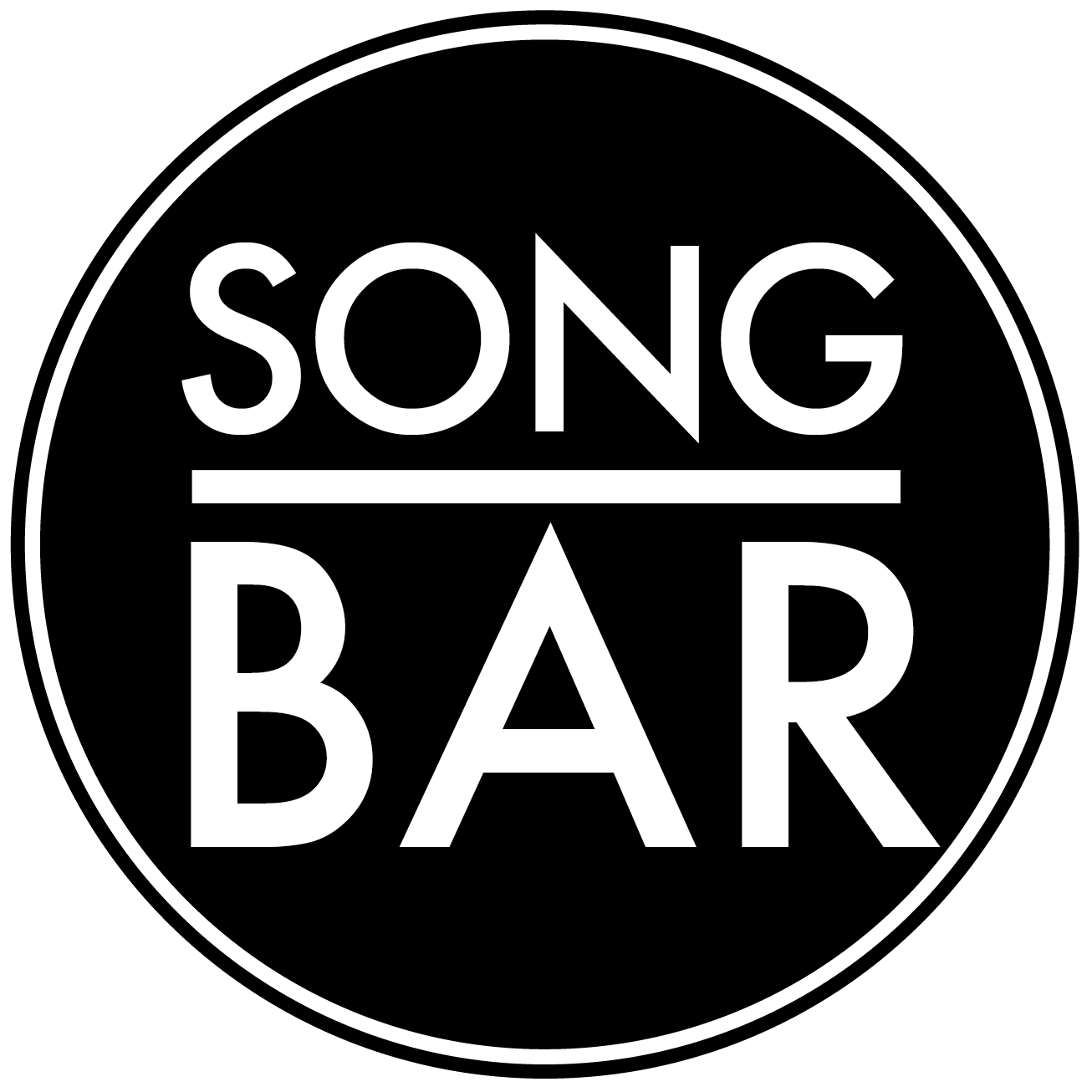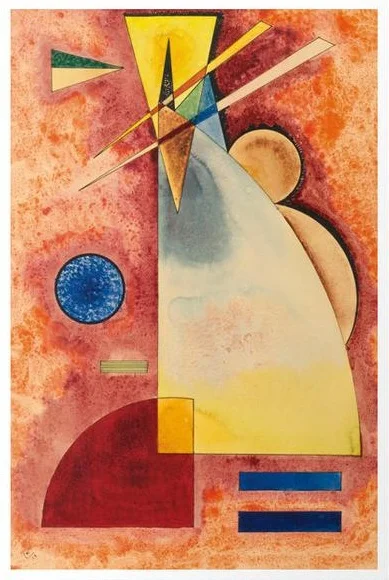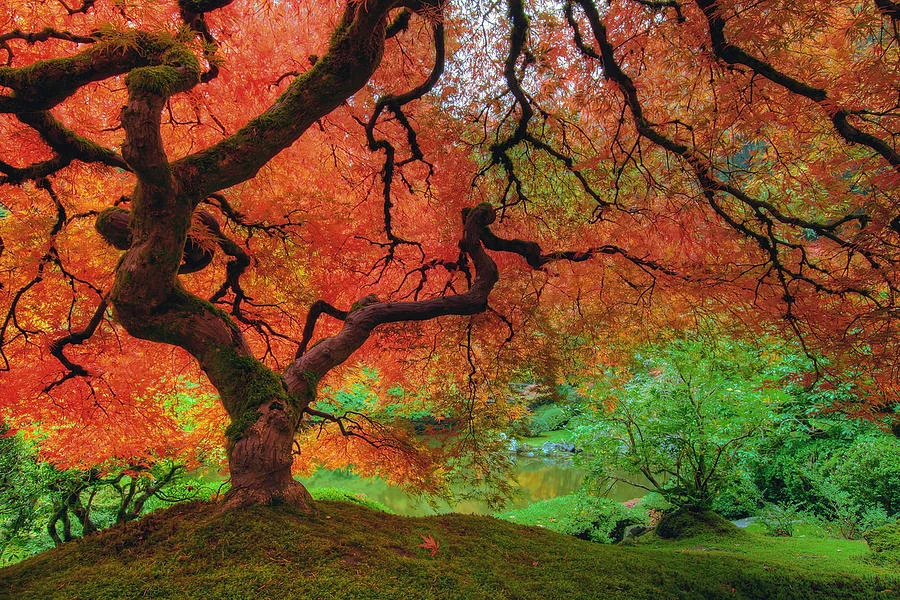By The Landlord
“Orange is the happiest colour.” – Frank Sinatra
“Orange is red brought nearer to humanity by yellow.” – Wassily Kandinsky
Nothing rhymes with orange, other than sporange, a very rare alternative form of sporangium, the botanical term for a part of a fern or similar plant. Perhaps you could half-rhyme it, with bit of a cringe, with arrange, or at a pinch, with syringe, but that’s really pushing it.
So why is orange, a word that is big and resonant in the mouth’s delivery, also strong in song? Perhaps because of its oddness, because it stands out, because objects, plants, animals, birds, or clothing of that colour are nature’s exclamation mark, from the tiger to the tadorna to iguana, canary to oriole, koi carp to flame angelfish, from leaping red (but really orange) foxes and squirrels to leopard butterfly, from paprika to pumpkin, carrot to apricot, mango to marmalade, made of course from the orange, a fruit more commonly in the east, a mandarin. So this week our topic is not just about the word, but anything that is indeed, prominently and undeniably orange.
Orange poppies
Orange glows with a warmth, it zings with life. It’s a symbol of happiness and fertility. “To go gathering orange blossoms” is a phrase meaning to search for a wife, referring to orange blossoms as wedding decorations. But it can also be about contrast. To compare apples and oranges means to try and highlight the similarities between two different incompatible things – but that surely is a process which is potent and creative in song or any other art form.
“Orange is an underrated colour,” says the vibrant film and music video director Michel Gondry.
“Orange strengthens your emotional body, encouraging a general feeling of joy, wellbeing, and cheerfulness,” says the martial arts and health guru Tae Yun Kim, originally from South Korea. “The sky takes on shades of orange during sunrise and sunset, the colour that gives you hope that the sun will set only to rise again,” announces the Indian film star Ram Charan. “There is no blue without yellow or orange,” says Vincent Van Gogh, for whom joy was elusive in real life, but burst out through his paintings.
Vincent Van Gogh’s La Cafe De La Nuit (The Night Cafe), Place Lamartine, Arles, September 1888
Orange is the Dutch national colour, from William of Orange the stadtholder of Holland and Zeeland, to the modern national football strip, but is has all kinds of other cultural associations. In European and American culture its associated with joy, frivolity and entertainment, from clowning, as shown in Pierre-Auguste Renoir's 1868 painting and onwards, back to ancient Greek paintings of Bacchus or Dionysus, the god of wine, indulging in ritual madness and ecstasy, and dressed in that hue. Parisian pleasure-seeker Toulouse-Lautrec used a palette of yellow, black and orange in his posters of Paris cafes and theatres, and Henri Matisse used an orange, yellow and red palette in his painting, the Joy of Living. Orange is all about having energy, vitality, cheer, excitement, adventure, warmth, good health, and generally having a good time. It’s the colour of orange juice, and also whisky, but also of urine!
Intermingling by Wassily Kandinsky, 1928
In Chinese Confucianism, orange is the colour of transformation, moving between red and yellow. The colour comes not from the orange fruit, but from saffron, the most prized and expensive Asian dye. So first, yellow is the colour of perfection and nobility; and red the colour of happiness and power. Yellow and red are compared to light and fire, spirituality and sensuality, seemingly opposite but complementary. But out of their interaction comes orange, the colour of transformation. And in Hinduism and Buddhism, orange, and its associations come in a wide variety of shades, from a slightly orange yellow to one that’s closer to deep orange red, again as saffron, commonly worn by monks and holy men across Asia.
Buddhist monks
So where does orange begin and end, instead becoming red, yellow or brown? In some ways that’s subjective, but scientifically orange is on a a wavelength between approximately 585 and 620nm. But depending on context it is possible to see the colour in all kinds of shades from burnt orange to butterscotch, papaya whip to vermilion, tea rose to half-ripe tomato. The orange colour of carrots, pumpkins, sweet potatoes, oranges, and many other naturally forming foods comes from carotene, a photosynthetic pigment, that converts light energy absorbed from the sun into chemical energy for the plants' growth. In autumn, when the weather turns cold and production of green chlorophyll stops, only orange colour remains, so that explains why that season can be so poetically beautiful.
Japanese maple trees in autumn
In researching the colour of the past day, I’ve begun to notice it everywhere, but was also surprised to discover that not all carrots are orange. Before the 18th century, carrots from Asia were usually purple, while those in Europe were either white or red. The orange variety we know best, originating from Holland in the early 18th century was bred by Dutch farmers, and is the ancestor of the orange horn carrot. It is even theorised that the English language did not have a word of orange until the fruit was imported in the 17th century.
Modern food produce is awash with artificial or orange colouring, carotenoids to curcuminoids, found in cheeses, products like Doritos to curry powder and paella to paprika and chilli peppers or turmeric in mustard. It’s also the colour of that soft fizzy drink Tango, whose marketing wing commissioned a series of very successful TV ads in the 1990s, creating a crazed time-warp underworld of scary taste shock characters to amuse and bemuse its customers. In many ways the ads are far better than the product:
Orange, now called EE, was also the brand name of UK mobile phone network, whose ads were equally entertaining, associating itself particularly with the film industry, and a parody thereof:
So from orange as joy and entertainment, as well a packaged product, cheesy or spicy, artificial, strange or surreal it can also have another side – orange is also a colour of warning. In the present climate, it’s one we can now also associate with superficiality, the false tan, and words of Donald Trump. But I don’t want to picture that orange buffon here, so instead let’s have a beautiful Bengal tiger:
Bengal tiger. The world’s most beautiful ginger
As in other bright colours, its stands out as something we should keep away from or be careful of. It’s the colour of road workers outfits and signposts, and sometimes prison uniforms. And as warning to ships and aeroplanes, San Francisco’s Golden Gate Bridge is painted in a colour known as international orange, which may serve a purpose, but is also rather beautiful:
Golden Gate Bridge – painted in ‘international orange’
Songwriters have also taken the warning side of orange in a far more dangerous and deadly context – the horrific use of Agent Orange, best known for aerial chemical warfare in the decade of the Vietnam War. The US Airforce sprayed more than 20 million gallons of herbicide defoliants in the operation code-named Ranch Hand, causing untold suffering to many innocent people. Agent Orange, the dioxin-contaminated and exceedingly toxic herbicide manufactured by chemical companies for the US Department of Defence, was the dominant weaponised herbicide sprayed in the war.
Agent Orange - horror chemical of the Vietnam War
But the colour orange happily is also a product with many musical associations. The Fender orange sunburst guitar is perhaps the most famous and vibrant electric guitar design in history. And Orange amps and guitars are also an attractive looking and sounding range.
It’s in the name. Or would you prefer a Fender orange sunburst?
So with that, let’s bring orange back to its vibrant, life-giving and beautiful association. And on that note, who better to guide us through all songs associated with this glowing colour than with a return by that most warm and joyfully enthusiastic of gurus, rising from the east, but our very own sunny Hoshino Sakura! Place your orange song nominations in comments below for deadline by Monday 11pm UK time, for playlists published on Wednesday. オレンジ Orenji!
Now let’s play …
New to comment? It is quick and easy. You just need to login to Disqus once. All is explained in About/FAQs ...
Fancy a turn behind the pumps at The Song Bar? Care to choose a playlist from songs nominated and write something about it? Then feel free to contact The Song Bar here, or try the usual email address. Also please follow us social media: Song Bar Twitter, Song Bar Facebook. Song Bar YouTube. Subscribe, follow and share.











